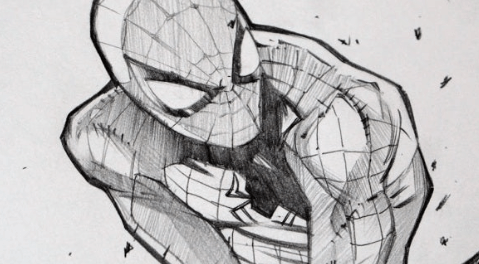Drawing:7barsug8u0w= Spider-Man

In the realm of artistic expression, the depiction of Spider-Man stands as a timeless symbol of agility, strength, and heroism. This tutorial on drawing Spider-Man encapsulates the essence of freedom and creativity, offering enthusiasts a structured approach to capturing the essence of this beloved character.
From mastering the iconic pose to understanding intricate details like webbing and shadows, this guide provides a comprehensive foundation for artists to explore and enhance their skills. By delving into the nuances of proportions and anatomy, aspiring artists can delve into the world of Spider-Man’s dynamic universe, making each stroke on the canvas a testament to their artistic freedom and imagination.
Spider-Man’s Iconic Pose
When portraying Spider-Man’s iconic pose, artists often emphasize his agility and strength through dynamic positioning and fluid lines. Spidey’s agility is showcased in the way his body twists and contorts, conveying a sense of grace and power.
Additionally, costume details such as the web patterns and vibrant colors enhance the visual impact, capturing the essence of freedom and movement that defines the character.
See also: Clipart:Elapzvbicei= Bat
Understanding Proportions and Anatomy
Continuing the exploration into Spider-Man’s portrayal, a crucial aspect that artists must master is understanding the proportions and anatomy of this iconic superhero. Body proportions and muscle definition play a significant role in capturing Spider-Man’s agile and powerful physique.
Additionally, attention to joint articulation and facial expressions is essential to convey the dynamic movements and emotions that define this beloved character.
Mastering Dynamic Webbing Details
Building upon the foundation of understanding proportions and anatomy is essential for capturing the essence of Spider-Man’s iconic appearance in illustrations. Mastering dynamic webbing details enhances realism and brings the character to life. Incorporating advanced webbing techniques focuses on texture and movement, conveying the agility and power of Spider-Man through the dynamic flow of his webbing in action-packed scenes.
Adding Depth and Shadows
To enhance the visual impact of Spider-Man illustrations, incorporating depth and shadows is crucial. Utilizing shading techniques can create a 3D effect, making the character appear more lifelike and dynamic.
Conclusion
In conclusion, mastering the art of drawing Spider-Man requires a keen eye for proportions, anatomy, dynamic webbing details, depth, and shadows.
Just like a skilled weaver spins intricate webs, an artist must carefully craft each line and shade to bring this iconic superhero to life on paper.
With practice and patience, anyone can capture the essence of Spider-Man in their artwork.




